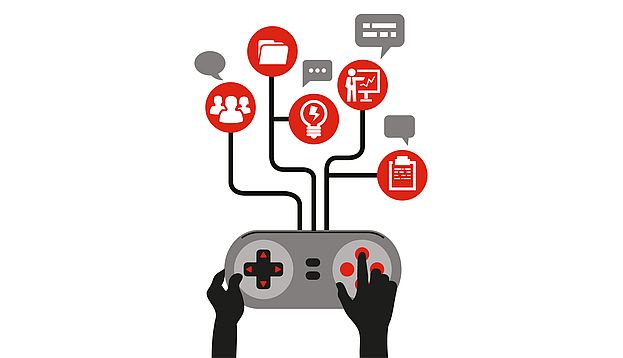The rapid changes in the game industry have been obvious for over thirty years, as we’ve progressed from graphics created by a few pixels to photo-realistic 3D movement, from a few thousand bytes of storage to dozens of gigabytes, from unconnected devices to a global high-speed Internet. Yet for most of that time period, game marketing stayed pretty much the same. For the late 20th Century, game marketing meant you had an art director create some box art, you wrote some box copy and took a few screen shots, then created an ad which you placed in the handful of leading game magazines timed to appear when the game would surface in retail stores. The next game is ready for the process by this time… Lather, rinse, repeat.
All that has changed as we entered the era of online games, digital distribution, games-as-a-service, social and mobile games. A vast array of new capabilities became available to marketers as games became liberated from the boundaries of the retail box. Social media, easy video sharing, massive amounts of data about customers and game usage and sales… and new business models fundamentally different from the game-in-a-box model all drove incredible changes in marketing.
Now marketing has begun to evolve rapidly, faced with the pressures of competing against not just a handful of games but hundreds of thousands of games, all readily available and most of the free to take for a spin. The competition is no longer making predictable moves, and it’s not always clear whether your competition is another game or some other activity like watching a video or spending time on social media. Marketers are now faced with an overwhelming array of choices, tools, media, methods and goals. Is it better to maximize the number of users or the revenue per user, or the long-term engagement How does the game design influence the marketing, and vice-versa How do you engage with the community, and is that more important than deciding on your acquisition techniques?
The [a]listdaily takes a look at some of the trends in game marketing to keep an eye on for 2015. Fasten your seat belts — we may encounter some turbulence ahead.
The Only Constant is Change
As the game market continues to expand, globally and demographically and technologically, the marketing strategies that worked best in the past will inevitably get less effective. For that matter, the more successful marketing tactics may become less effective through their sheer success — when getting into the top 100 list proved to be an effective way to kickstart viral uptake of a title, companies started spending heavily on app installs to make that happen. That drove up the price of paid installs to the point where it became too expensive for many games to make a profit, so now fewer companies try that strategy.
New types of ads will keep appearing, as will new technologies that help potential players get into a game. Interesting and creative tactics will be tried, and some will succeed, whereupon others will begin using those tactics as well. The only thing you can be pretty sure of is that sticking with the same marketing playbook month after month will sooner or later become less effective. Marketing is now surfing on the wave of technological change, and that means constant adjustments to stay on top of the wave. And you’d better be looking ahead, too, to make sure you don’t run into a rock or another surfer or a great white shark. If you expect to sit back and relax, you’d better be on vacation, because marketing will demand constant effort just to stay even.
The New Meaning of CMO: Community Marketing Officer
Marketing is no longer fully under your control in the gaming industry, not with the massive social media network and direct connections with every single customer not only possible, but expected. Marketing is not just about sending messages any more — it’s about engaging in a conversation, if you’re lucky. But it’s going further than that — your customers are becoming marketers of your products, and in some cases they are more influential than the marketing driven by the company.
Now there are YouTubers with millions of followers who can make a video extolling your game — or trashing it. The surprise hit game Flappy Bird had been languishing in obscurity until star YouTuber PewDiePie ranted about how terrible it was… whereupon his millions of followers downloaded it to see for themselves, and a phenomenon was born.
When your game has millions of fans, there are millions of potential voices talking about your game. Some of them will get amplified and have an outsized effect, and it’s impossible to tell when and where that will happen. Marketers are just beginning to grapple with this phenomenon, which will continue to strengthen in 2015. It’s time to figure out how to turn this to your advantage in the future, before it becomes a problem rather than an opportunity.
 Master Chief, Marketer
Master Chief, Marketer
Content is Conquering
Those days when you could craft a few messages for a product and then spend your time figuring out how to repeat them as much as possible within your budget are over. The customers want more information, more connection, more everything if they love your product — or if you want to convince them to love your product.
That means articles, stories, videos, music, artwork… either created in-house, or coming from the community and shared with them. This will become increasingly important in 2015, as companies strive to create lasting brands that can engage an audience for years. Releases of a game and its DLC can’t be frequent enough to satisfy the desire of fans to embrace the experience of the game endlessly. You’ve got to slake their thirst with more information somehow.
Creativity Gets More Valuable
Each marketing plan will be a snowflake, unique and beautiful… if it wants to have a chance of lasting longer than a typical snowflake, or having more of an impact than one. Marketing should be interwoven with every aspect of a game company, from the game design and development to the customer service and community relations, from finance to HR. Ideas can come from all parts of the company, and should resonate with all parts of the company.
Look at some of the very successful marketing tactics that are happening these days. BlizzCon, for instance, was a terrific way to connect to fans and excite them about products new and old, but it’s not a typical marketing technique. Events both physical and virtual are becoming a very interesting way to connect with fans, and we’ve only just begun to see the possibilities.
As the competition gets more intense at all levels, creativity will become even more valuable as a way to compete against companies with massive audiences or massive warchests. The opportunities for creative marketing have never been greater — witness the millions of views that videos can get on little or no budget, if the subject matter is interesting enough. We’re going to see some newer game companies get noticed in 2015, and it won’t always be due just to the creativity of the games. Creative marketing has its chance to make a huge difference in 2015 and beyond.

